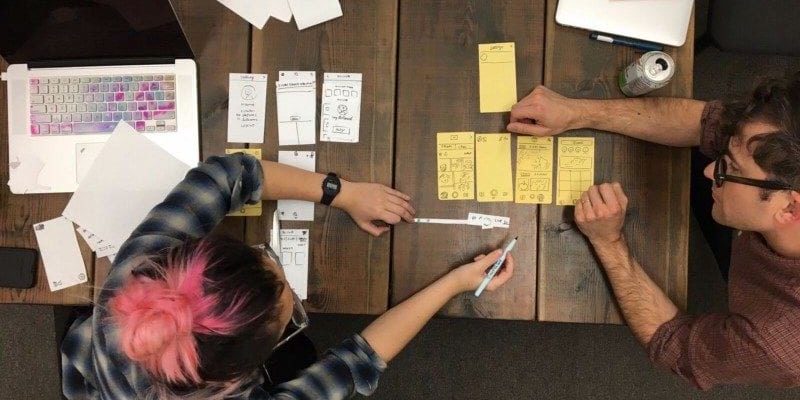Patreon Pairs: Why Pair Designing Should Be Your New Norm

Interview with Karl Dotter, Senior Product Designer at Patreon.
You’ve already heard about pair programming. The popular practice puts two keyboards, two monitors and two engineers at ONE computer. Companies like Facebook, Square and Twitter religiously practice pair developing.
But, have you heard about pair designing? Karl Dotter, a cartoonist and designer who’s worked at AOL, Cisco, Amazon, and, most recently taken on the role of Senior Product Designer at Patreon, is a huge advocate for taking pairing beyond the engineering team. He even started his own company ‘PairDesignCo’ which runs pairing workshops and has worked with companies like Tradecraft, Amazon, Pivotal Labs, Mozilla and Designer Fund. As Karl puts it:
“Pair design is: critical thinking & doing, trust building and less rework for creative teams that want to build great things together. Ever sat next to another designer and worked together on a single artifact? That’s #pairdesign.”
Patreon is an awesome company in the art community- it’s a membership platform that gives artists and creators the opportunity to make money doing what they love. Thousands of musicians, podcasters, video game developers, comic creators, and others are making a salary on Patreon. Through ongoing funding, they are able to spend more time engaging their fan-base in an interactive way and continue to populate the internet with beautiful things that millions of people enjoy.
We were super excited to speak to Karl about his experience with pair designing at Patreon and learn more about the growing pair design community.
Taplytics: How did your team implement pairing & what did the early days of adoption look like?
Pairing at Patreon is unique in that we already come to the table with core behaviours that help guide how we work together. As we’ve grown our product design team, we’ve become more intentional about creating the space (pairing stations that anyone can book on the calendar, lovingly named after famous pairs like Ray & Charles Eames) and time for pairing (we always try to schedule pairing time each week).
What social and corporate culture benefits come from pairing?
Pairing has definitely helped us socialize the design process and make designing more inclusive of other designers, engineers and product managers within the company. The cultural benefit is that it’s usually a very public process that helps quickly synthesize and democratize design decisions.
“We can all share skills. Designers, developers and other practitioners can pair.”
What difficulties have you had with pairing?
Sometimes context switching between two projects in a designer/designer pairing session is a great idea to make everyone feel like they are benefiting from the session but can also be challenging to give enough time for each project. This is not a big problem since even 5 minutes of pairing can help spark beneficial next steps for solo design time.
Can you give a specific example of a time when pairing worked really well?
When working on early mobile prototypes with another designer, we used pair sketching to fill in the gaps in our mobile flows and then immediately ran a paper prototyping UX research session with our internal team. This type of pairing is a clear example of how pairing helps designers synthesize and bring concepts together quickly. Also, it’s a reminder that pairing doesn’t always need to be high-fidelity. Making design decisions on paper and sharpies and then testing them out quickly is the dream!
Pair designing is still evolving from its roots in pair developing, but the main point Karl emphasizes is everyone can benefit from working with a partner and pairing definitely is not limited to the engineering department.
“Pairing makes design time more efficient and helps you redesign less.”
Designers, developers, product managers, and even C-suite team members can always share skills and benefit from constructive feedback.
Interested in learning more or getting more involved with pair design?
- Check out Karl’s awesome article on implementing pairing
- Read about how foodora implemented pair designing in combination with cross-functional teams
- Try it for yourself in the pairing community!
If you have experimented with pairing in another area of your business, we would love to hear about your experience in the comments!

Taplytics is a product experimentation solution committed to helping teams build great digital products on. By encouraging companies to execute, listen then iterate, Taplytics helps them validate product decisions with live user data to prove that they are making a positive impact.
